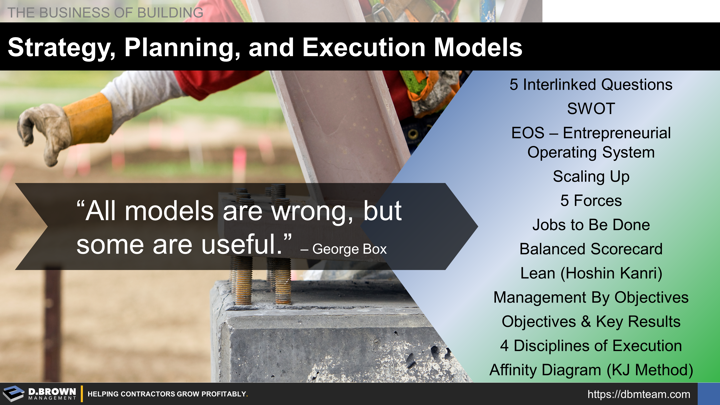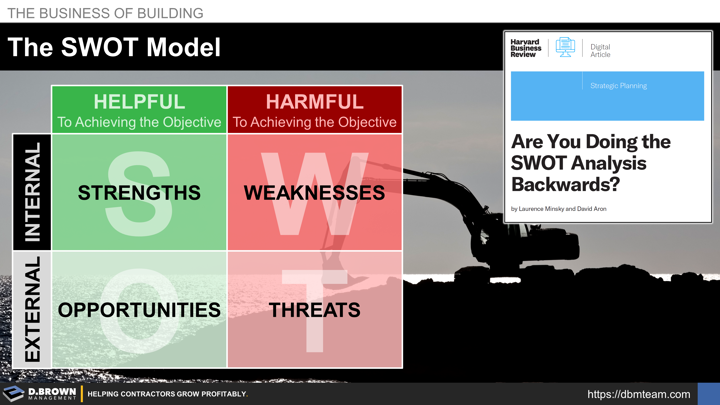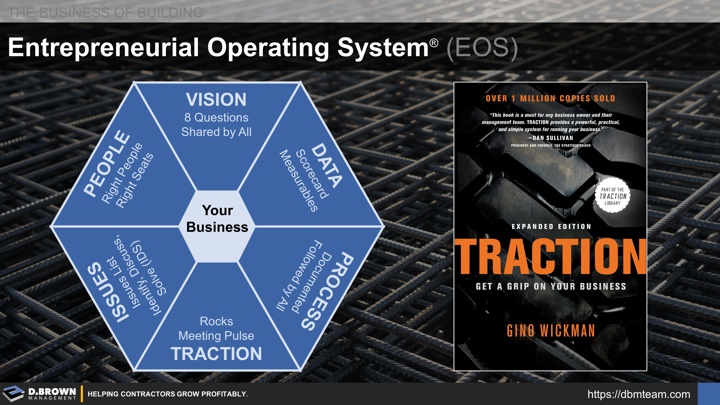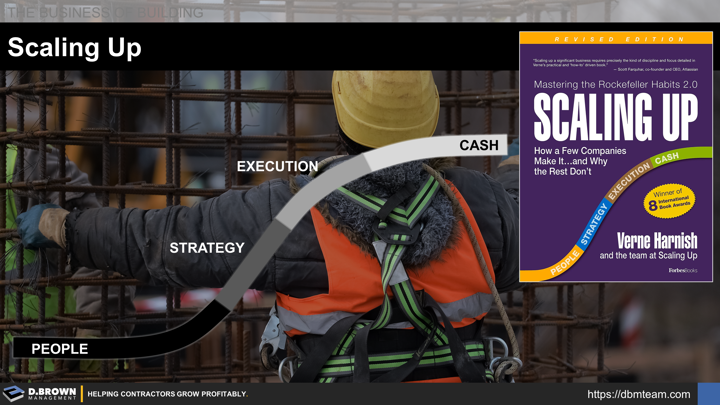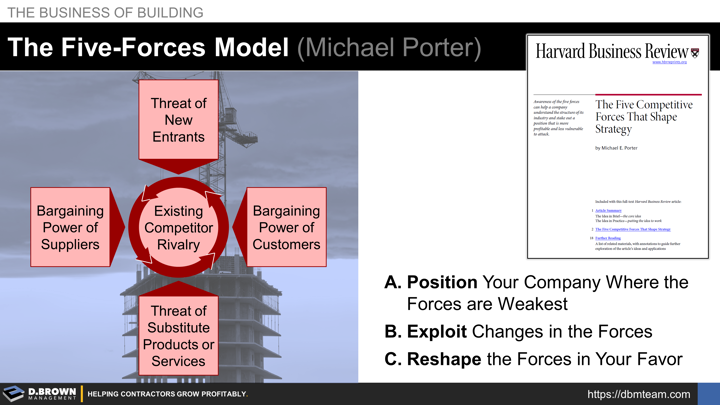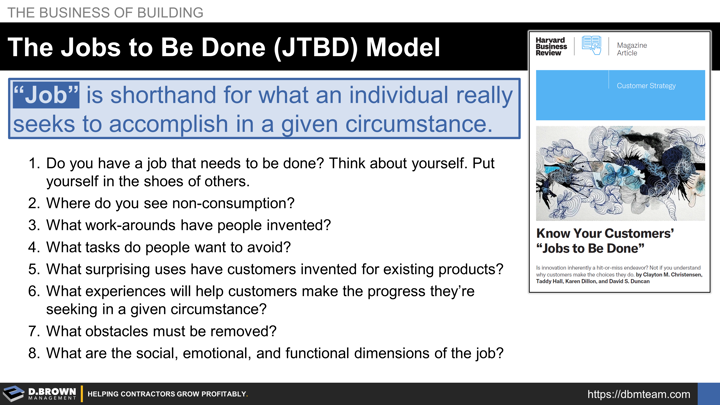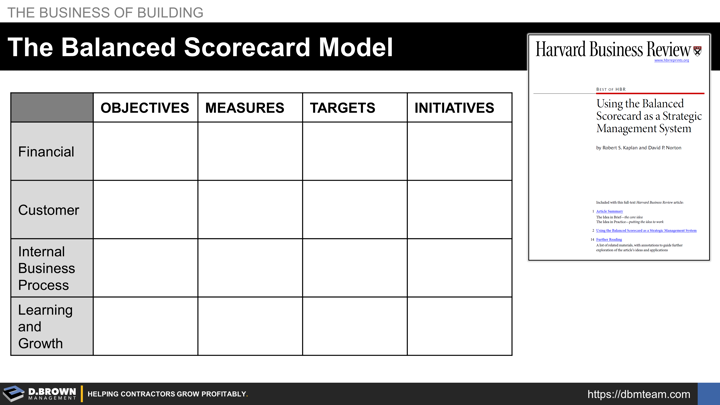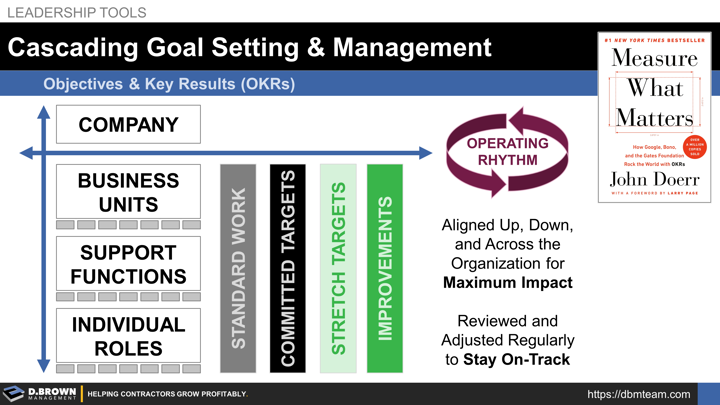"All models are wrong, but some are useful." - George Box
Building a construction business requires many levels of strategic decisions. Those strategic decisions change with each stage of growth and form the foundation of a business model and plan. Operational execution and strategic decisions must be aligned with organizational structures and management systems to achieve results.
Learn More: The Business of Building Series
There are many models, bodies of knowledge, and tools developed over the last 150 years or so since we started studying and codifying the various methods used. Some were built upon the foundation of other systems. Others have very specific-use cases, such as strategic innovation, alignment, or execution. Just like selecting a piece of construction equipment or psychometric evaluations, you need to look at a combination of:
- What you are trying to achieve, including prioritization if you are working to solve more than one thing.
- What your level of experience is, both personally and for your team. This includes capabilities, capacity, aptitude, desire, and discipline. Successful outcomes have more to do with the product of these five factors than they do with the model you choose to use.
As we help contractors navigate all stages of growth and succession, we've seen and used many different models. We've mixed and matched, using parts of each model to their maximum strengths. We've seen all models work very successfully. We've seen those same exact models lead to subpar results. The variable is usually a mismatch between the situation, the team, and the tools—the same thing that causes lack of productivity and safety issues on a jobsite.
12 Models - A Basic Overview
These are 12 of the models that we come across most often, with a brief background on each. Keep in mind that many of the promoters of these tools claim they are comprehensive and "The Best." This is similar to the claims made by the promoters of the various psychometric evaluation tools. These claims could be intentionally misleading because they sell better, but more likely stem from simple cognitive biases combined with a lack of broader experience.
If choosing the best model were that simple, we would include it in this article. Unfortunately, it is far more nuanced. Please contact us to discuss your particular situation. We will freely share any lessons we've learned with contractors across the country on what works and what doesn't.
Five Interlinked Questions (Roger Martin)
Historical Origin: Developed in the early 2000s, Roger Martin built upon principles of strategic management and design thinking, particularly from his work at the Rotman School of Management.
Roger Martin’s Five Interlinked Questions framework is a strategic approach that helps organizations define and execute their strategy. The five questions are: What is our winning aspiration? Where will we play? How will we win? What capabilities must be in place? What management systems are required? The model is praised for its holistic approach to strategy, ensuring alignment across all aspects of the business. However, it can be challenging to implement due to its broad scope and depth.
We view these questions as the foundation, with many other models and tools helping to answer and execute them.
Book: Playing to Win: How Strategy Really Works
SWOT Analysis (Strengths, Weaknesses, Opportunities, and Threats)
Historical Origin: Developed at Stanford Research Institute in the 1960s by Albert Humphry, this model builds upon various management and business strategy theories.
SWOT stands for Strengths, Weaknesses, Opportunities, and Threats. It's a strategic planning tool used to identify internal and external factors that can impact a project, business, or individual. SWOT is known for its simplicity and flexibility but can be overly simplistic for complex situations. It's still widely used in strategic planning today.
This is probably one of the best starter tools for contractors in the first four stages of growth to help align and stretch their teams. We often pair this with elements of an Affinity / KJ process (see below.)
HBR Article: Are You Doing the SWOT Analysis Backwards?
Entrepreneurial Operating System (EOS)
Historical Origin: Developed by Gino Wickman in the early 2000s, EOS builds upon the business management practices and frameworks for small to medium-sized enterprises.
EOS is a comprehensive business management system designed to help entrepreneurs and leadership teams focus, grow, and achieve their goals. It is characterized by its practical, straightforward tools like the Vision/Traction Organizer (V/TO). While EOS is highly regarded for its simplicity, it may be less effective in highly complex or large organizations.
The principles of EOS are applicable to contractors of all sizes. If the disciplines described in any of the similar models like OKRs, Scaling-Up, or 4DX are built into a contractor during the first three stages of growth, then the more specialized models for innovation and strategic choices can be integrated.
Book: Traction: Get a Grip on Your Business
Scaling Up (Mastering the Rockefeller Habits)
Historical Origin: Developed by Verne Harnish in the 2000s, beginning with The Rockefeller Habits, which later evolved into Gazelles and eventually Scaling Up. It builds on the prior bodies of knowledge around business management, strategy, and leadership.
Scaling Up provides a framework for growing a business by focusing on four major areas: People, Strategy, Execution, and Cash. It is particularly useful for companies looking to grow rapidly while maintaining operational efficiency. While the model is practical, it can be resource-intensive to implement.
The returns are there if executed effectively. This gets back to outcomes being largely determined as a product of the team's capabilities, capacity, aptitude, desire, and discipline. The focus on "People First" aligns perfectly with how we see The Talent Value Stream (TVS) as part of The Contractor's Business Model.
Book: Scaling Up: How a Few Companies Make It...and Why the Rest Don't
Porter's Five Forces
Historical Origin: Michael Porter developed this model in 1979 based on microeconomic theories.
Porter's Five Forces is a framework for analyzing the competitive forces in an industry: competition, potential entrants, power of suppliers, power of customers, and the threat of substitutes. While praised for its thorough analysis of competitive environments, Porter's Five Forces may not fully capture the complexity of modern industries, such as technology.
Extremely valuable for evaluating strategic possibilities and make strategic market choices.
Book: Competitive Strategy: Techniques for Analyzing Industries and Competitors
HBR Article + Video: The Five Competitive Forces That Shape Strategy
Jobs to Be Done (JTBD) / Outcome-Driven Innovation (ODI)
Historical Origin: Clayton Christensen first developed this in the 1990s, drawing on innovation theories and customer behavior research. One of those was Outcome-Driven Innovation (ODI) by Tony Ulwick. Both ideas are complimentary and closely linked.
JTBD is a theory that focuses on understanding customer needs by identifying the "job" they are trying to accomplish with a product or service. It is known for driving innovation by focusing on customer outcomes, though it can be challenging to implement due to its qualitative nature.
These customer outcomes (JTBD / ODI) can also be evaluated against the Kano Model for customer satisfaction.
Book: Competing Against Luck: The Story of Innovation and Customer Choice
HBR Article: Know Your Customers’ “Jobs to Be Done” (Video)
Strategyn (Tony Ulwick) Videos: YouTube Channel
Balanced Scorecard
Historical Origin: Developed in 1992 by Robert S. Kaplan and David P. Norton, the Balanced Scorecard integrates management accounting, strategic planning, and performance measurement theories.
The Balanced Scorecard is a strategic management tool that translates an organization's mission and vision into a set of performance measures across four perspectives: financial, customer, internal processes, and learning/growth. It offers a comprehensive view of organizational performance but can be complex to implement.
You will see elements of this in the EOS and Scaling-Up models.
Book: The Balanced Scorecard: Translating Strategy into Action
HBR Article: Using the Balanced Scorecard as a Strategic Management System
Lean (Hoshin Kanri)
Historical Origin: 1950s (Lean) and 1960s (Hoshin Kanri) by Taiichi Ohno and Yosuhiko Akao, these concepts are derived from the Toyota Production System (TPS) and Japanese management practices. Some elements were heavily influenced by programs such as Training Within Industry (TWI). All bodies of knowledge tie together.
Lean focuses on eliminating waste to improve efficiency, while Hoshin Kanri aligns organizational goals with day-to-day operations through strategic planning. Both are highly effective in manufacturing and operations management, but Lean's principles have been broadly applied in various industries. Hoshin Kanri is praised for its strategic alignment but can be resource-intensive.
Book: The Machine that Changed the World
Video with Dr. Jeffrey Liker: https://youtu.be/Lw-m40QcKCA
Management by Objective (MBO)
Historical Origin: Developed in1954 by Peter F. Drucker, MBO is based on management theory that emphasizing goal setting and participative management.
MBO is a performance management approach where managers and employees collaborate to set, monitor, and achieve specific objectives. It's known for its clear goal-setting process but criticized for potentially encouraging short-term thinking over long-term strategic goals.
MBO evolved into OKRs and 4DX (see below)
Books: The Practice of Management / The Effective Executive
Objectives and Key Results (OKRs)
Historical Origin: Developed at Intel by Andy Grove in the 1970s, building upon the MBO framework, and later popularized by John Doerr and its use at Google.
OKR is a goal-setting framework that focuses on defining clear Objectives and the Key Results needed to achieve them. It is praised for its ability to align individual and organizational goals but can be challenging to maintain consistent focus and follow through.
Learn More: Cascading Goal Setting & Management (Objectives and Key Results - OKRs)
Books: High Output Managment / Measure What Matters
The 4 Disciplines of Execution (4DX)
Historical Origin: Developed in the 2000s by Chris McChesney, Sean Covey, and Jim Huling, 4DX builds upon execution principles of strategic planning and goal achievement, drawing from frameworks like MBO and OKR, with prioritization similar to the Theory of Constraints (ToC).
4DX emphasizes four key disciplines: focusing on the wildly important, acting on lead measures, keeping a compelling scoreboard, and creating a cadence of accountability. It is particularly effective for organizations struggling with strategy execution but may require a cultural shift for successful implementation.
Book: The 4 Disciplines of Execution: Achieving Your Wildly Important Goals
Affinity Diagram / KJ Method
Historical Origin: Developed in the 1960s by Jiro Kawakita in Japan as part of the Total Quality Management (TQM) approach, the method was first used to help Nepalese villagers identify and align on problems and solutions for potable water supplies.
The Affinity Diagram, also known as the KJ Method, is a tool used to organize ideas and data into groups based on natural relationships. It is particularly useful in brainstorming sessions to sort and categorize a large number of ideas. Its main advantage is fostering creativity, though it may lack structure in complex scenarios.
This is a general tool that can be used in conjunction with all other models above. We discussed this in greater detail with practical examples of how to prioritize improvements.
Is this a lot to go through? Yes. There is perhaps 60 hours of material here just to understand the basics of the different models. Do you have to go through it all at once? No. If you invested just a couple hours per week studying and reflecting, you would be better equipped to choose and implement the right sets of tools in less than a year.
Remember that you don't have to master any of these. It is a matter of understanding the similarities, differences, strengths, and weaknesses.
More of it is about understanding yourself, your team, your business, and your customers.
An experienced and unbiased third party can be invaluable for helping select and implement the right models and tools for your business.
All relationships begin with a simple conversation. Let's talk.

